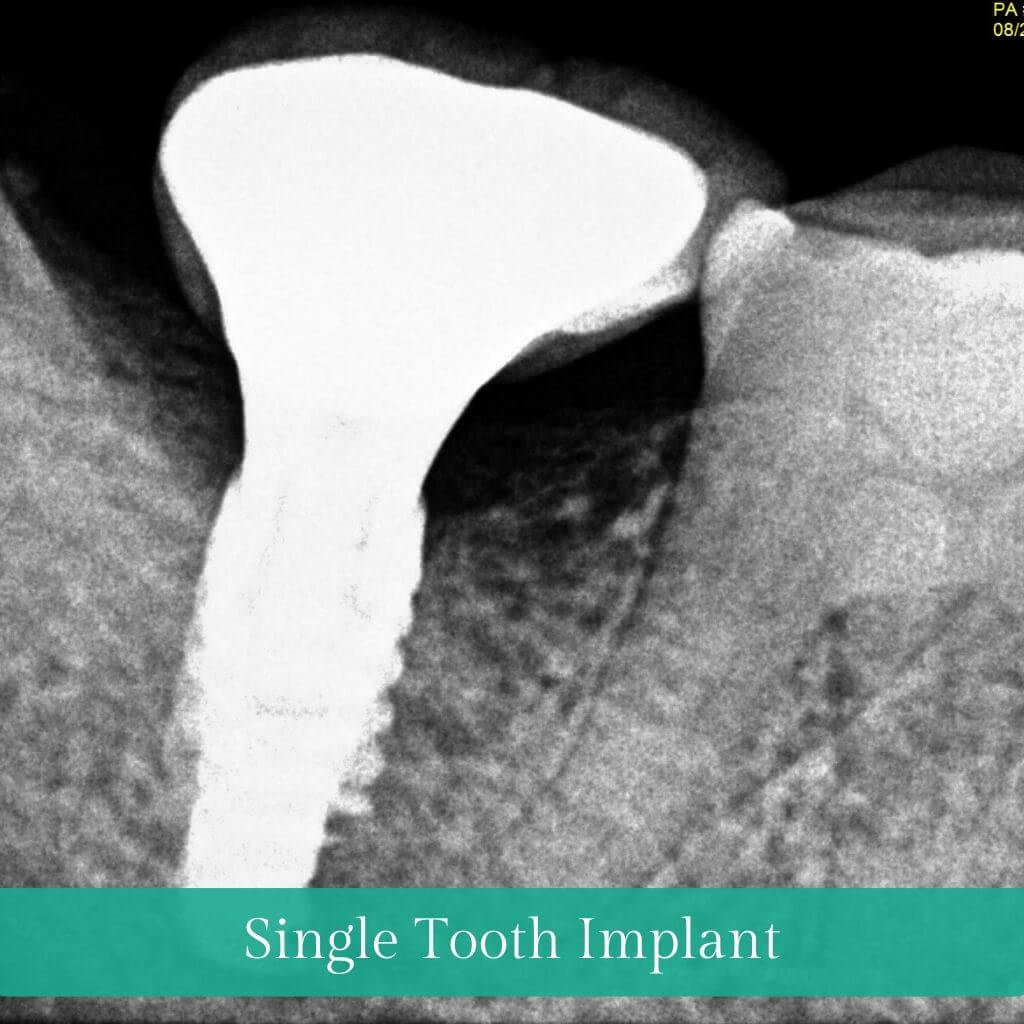Can Dental Implants Be Done in 1 Visit?
Imagine going to the dentist and coming back with a fixed, fully functional replacement for a missing tooth in just ONE visit.
You may think it's impossible, but it is possible to get fixed teeth with dental implants in JUST ONE DAY!!!
With advanced technology, dental implants can be placed along with fixed crowns on them in the same SINGLE visit!
Learn more about one-visit dental implants, from eligibility and procedure to potential risks and benefits.
Key Takeaways
- Dental implants can now be achieved in a single visit, eliminating multiple appointment requirements.
- One-visit implants are a less invasive procedure, resulting in reduced recovery time and pain.
- These implants offer good integration with surrounding teeth and gums, improving stability and aesthetics.
- One-visit implants simplify implant care with shorter and less frequent follow-up visits.
Traditional vs. Same-Day Implants
The primary contrast between conventional dental implants and same-day implants is the duration of the treatment. With traditional implants, the process is typically spread out over several months, involving multiple appointments. You'll first have an initial consultation, followed by tooth extraction, bone grafting if necessary, implant placement, a healing period of 3-6 months, abutment placement, and finally, crown placement.
In contrast, same-day implants, also known as "Teeth in a Day," aim to provide you with a fixed tooth or teeth in a single visit. Your dentist will assess your oral health, place the implant, and attach a temporary crown or denture, allowing you to leave with an immediate restoration.
This streamlined approach significantly reduces treatment time and offers a quicker solution for those seeking dental implants.
Single-Visit Dental Implant Procedure
One-visit dental implants rely on careful planning and efficient execution. The procedure can be summarized as follows:
- Consultation: A comprehensive examination and consultation with the dental implant specialist are crucial to determine the patient's suitability for same-day implants. Digital imaging and 3D scanning are often used to assess the bone structure and plan the procedure.
- Tooth Extraction (if necessary): If a patient has a decayed or damaged tooth at the implant site, it might be necessary to extract it before proceeding with the implant procedure.
- Implant Placement: Using advanced surgical techniques, the dental implant specialist inserts the implant post directly into the patient's jawbone. This step often eliminates the need for bone grafting because the post can be anchored securely in the available bone.
- Temporary Crown Placement: A temporary crown is attached after the implant post is securely in place, allowing the patient to leave the office with a fixed tooth on the same day.
- Healing and Follow-Up: While one-visit dental implants expedite the process, a period of healing and follow-up visits are still necessary to ensure proper integration and assess the implant's success.
- Final Crown Placement: Once the implant has fully integrated with the bone and any necessary adjustments are made, a permanent crown is affixed, completing the process.
Candidacy and Assessment
Candidacy and evaluation for one-visit or same-day dental implants require a thorough examination to determine if the patient is eligible for the accelerated procedure. Here is a list of key factors that are considered during the candidacy and assessment process:
- Individuals with missing teeth.
- Adequate jawbone density and quality.
- Good overall health.
- Non-smokers or those willing to quit smoking.
- No active gum disease.
- Committed to proper oral care and maintenance.
Benefits of One-Visit Implants
One-visit dental implants offer several advantages over traditional implant procedures:
- Time Efficiency: The most significant benefit is the drastic reduction in treatment time, allowing patients to enjoy a fully restored smile daily.
- Reduced Discomfort: The minimally invasive nature of same-day implants often results in less post-operative discomfort and a quicker recovery.
- Immediate Aesthetics: Patients leave the office with a temporary crown that provides both functional and aesthetic benefits.
- Minimal Bone Grafting: Same-day implants are designed to preserve the existing bone; post-extraction loss of alveolar bone is reduced, thus reducing the need for extensive bone grafting procedures.
Potential Risks and Complications
While one-visit dental implants offer numerous benefits, it's important to be aware of potential risks and complications, as with any medical procedure. These may include a slightly increased risk of implant failure, the possibility of infection, and the need for regular follow-up visits to address any long-term stability concerns.
These risks are manageable, and with proper care and oversight, the advantages of same-day implants often far outweigh the potential drawbacks, making them a convenient and effective solution for many patients.
FAQ’s
Sure, to replace a missing tooth, a titanium post gets surgically implanted into the jawbone. Over time, this post bonds with the bone, creating a sturdy base for a personalized dental crown that fills the space seamlessly.
Conclusion
In conclusion, one-visit dental implants have brought convenience and efficiency to dental implantology. However, the suitability of this procedure depends on various factors, and the risks and benefits should be weighed carefully.
Patients seeking a swift and effective solution for their missing teeth should consult a qualified dental implant specialist to determine if same-day implants are the right choice.
The future of dental implant technology is bright, and the quest for improving the patient experience continues to drive innovation in this field.
Book your appointment with us at Hope Dental & Esthetic Clinic today to learn more!




